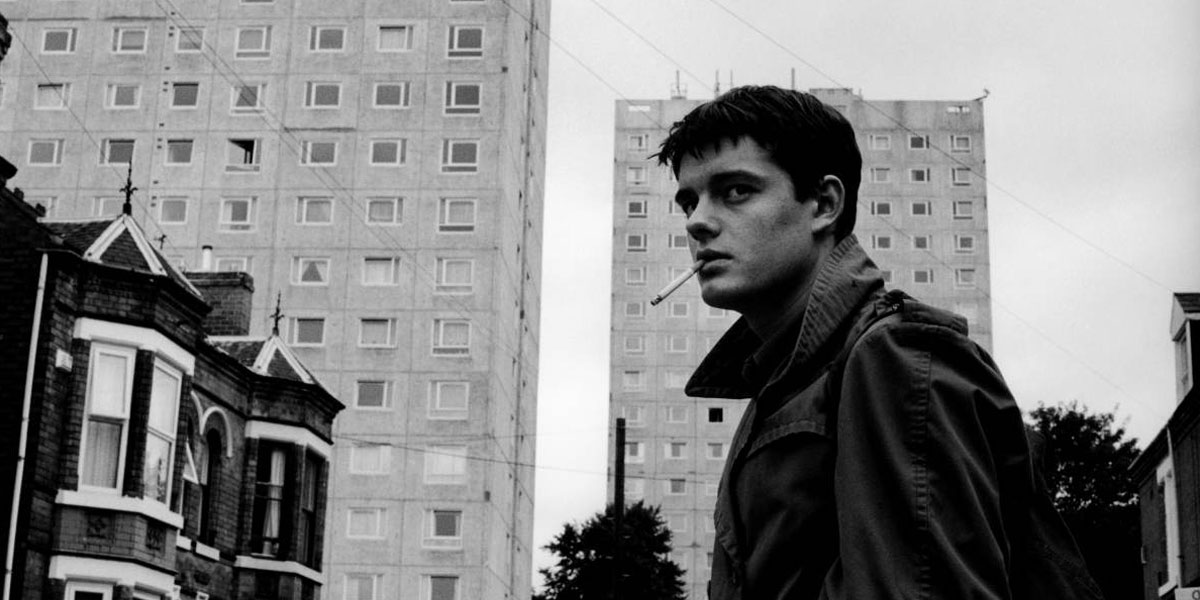

Her memoir was called Touching from a Distance, an allusion to a Joy Division lyric, and I'm afraid Anton Corbijn took this line a little too literally. It's adapted from Deborah Curtis' book about her life with Ian. The screenplay for Control was written by Matt Greenhalgh, who has previously written primarily for British television. The poetic personage Ian Curtis portrays in his lyrics is an enigma, one his acolytes have wanted to decipher for quite a long time, only to discover that the puzzle of the man behind the lyrics is proving even more difficult than the oblique images he describes. While this causes Ian no end of complications, the epilepsy and the onstage fits it brings on only add to his mystique.

Ironically, his former job was helping people with special needs, including epileptics, find employment. When he meets an alluring Belgian fanzine writer (Alexandra Maria Lara), he starts up a long-term affair with her, a fact he can't keep from Deborah forever. Having married his wife Deborah (Samantha Morton) at a young age, he realizes that he wasn't fully prepared for the decisions he has made. For the band, things only go up, up, and then up some more.
DAILYMOTION CONTROL IAN CURTIS TV
Within months, they have changed their name to Joy Division and have signed to Factory Records, the nascent label of TV personality Tony Wilson (Craig Parkinson). Things come together for him at a Sex Pistols gig in Manchester, when he is asked to join a band called Warsaw. Obsessed with David Bowie and Roxy Music, he practices in front of the mirror for the day he too will be a superstar.

Ian Curtis, played with doe-eyed sincerity by a remarkable Sam Riley, is a bored youth coming of age in the early 1970s in Manchester, an industrial town in Northern England.
DAILYMOTION CONTROL IAN CURTIS MOVIE
Control may be a movie for fans only.Ī quick history lesson comprises the first half of the film. Control is his directorial debut, and it is of sufficient merit that the legions of Ian devotees should walk away relatively pleased on the other hand, I'm not sure how it will play to the uninitiated. A rock photographer and video director of no small merit, Corbijn's penchant for grainy black-and-white film stock and iconic, declarative images makes him well suited to bring visual life to Joy Division's music. If anyone is suited to try to lift the load, however, it is Anton Corbijn. With the weight of this legacy to bear, making a film of Ian Curtis' life is no simple task. Are you hugging yourself to stay warm, or as reassurance that you're still alive? Listen to the tinkling chimes on a song like "Atmosphere," as Ian Curtis begs not to be left alone, and just try to ward off the chill. As the band progressed, pulling in synthesizers and other instruments to add icy layers to their dark melodies, the music became a thing of fractured beauty. Vibrating with the thrum of Peter Hook's inimitable bass lines, Curtis unleashed stark, poetic rants, delivered with his bottom-heavy voice, deep tones that sagged under the heaviness of his emotion. Curtis and his bandmates, who went on to form New Order, mapped prickly, desolate landscapes. These discs, and the various bits and bobs that orbited them, are fragile masterpieces. The late '70s band only released two full-fledged records before lead singer Ian Curtis took his own life in 1980. To many music fans, Joy Division is a precious thing.


 0 kommentar(er)
0 kommentar(er)
